
- •Clostridium
- •See Lecture Handouts
- •Clostridium spp. Anaerobic Gram-Positive Spore-Forming Bacilli
- •Spores
- •Clostridium Associated Human Disease
- •Clostridium perfringens
- •Clostridium perfringens — histotoxic or enterotoxigenic infections
- •Summary of C. perfringens Infections
- •Micro & Macroscopic C. perfringens
- •Summary of C. perfringens Infections (cont.)
- •Clostridial Cellulitis
- •C. perfringens Virulence Factors
- •Exotoxins Associated with C. perfringens Types A-E
- •C. perfringens Nagler Reaction
- •Clostridium tetani
- •Clostridium tetani — agent of tetanus
- •Summary of C. tetani Infections
- •Summary of Clostridium tetani Infections (cont.)
- •Clostridium tetani Gram Stain
- •Clinical Forms of Tetanus
- •Opisthotonos in Tetanus Patient
- •Risus Sardonicus in Tetanus Patient
- •Mechanism of Action
- •Clostridium botulinum
- •Summary of C. botulinum Infections
- •Summary of C. botulinum Infections
- •C. botulinum — agent of botulism, a rare, but severe (lethal) neuroparalytic disease
- •Mechanism of Action
- •Rates of
- •Clostridium dificile
- •Summary of
- •Summary of
- •Antibiotic-
- •Antibiotic-Associated Colitis
- •C. dificile Virulence Factors
- •Other Clostridium
- •Virulence
- •REVIEW
- •Clostridium spp. Anaerobic Gram-Positive Spore-Forming Bacilli
- •See Lecture Handouts
- •Spores
- •Review of Clostridium perfringens
- •Clostridium perfringens — histotoxic or enterotoxigenic infections
- •Micro & Macroscopic C. perfringens
- •C. perfringens Virulence Factors
- •Exotoxins Associated with C. perfringens Types A-E
- •C. perfringens Nagler Reaction
- •Review of Clostridium tetani
- •Clostridium tetani — agent of tetanus
- •Clostridium tetani Gram Stain
- •Clinical Forms of Tetanus
- •Mechanism of Action
- •Review of Clostridium botulinum
- •C. botulinum — agent of botulism, a rare, but severe (lethal) neuroparalytic disease
- •Mechanism of Action
- •Review of Clostridium dificile
- •Summary of
- •Summary of
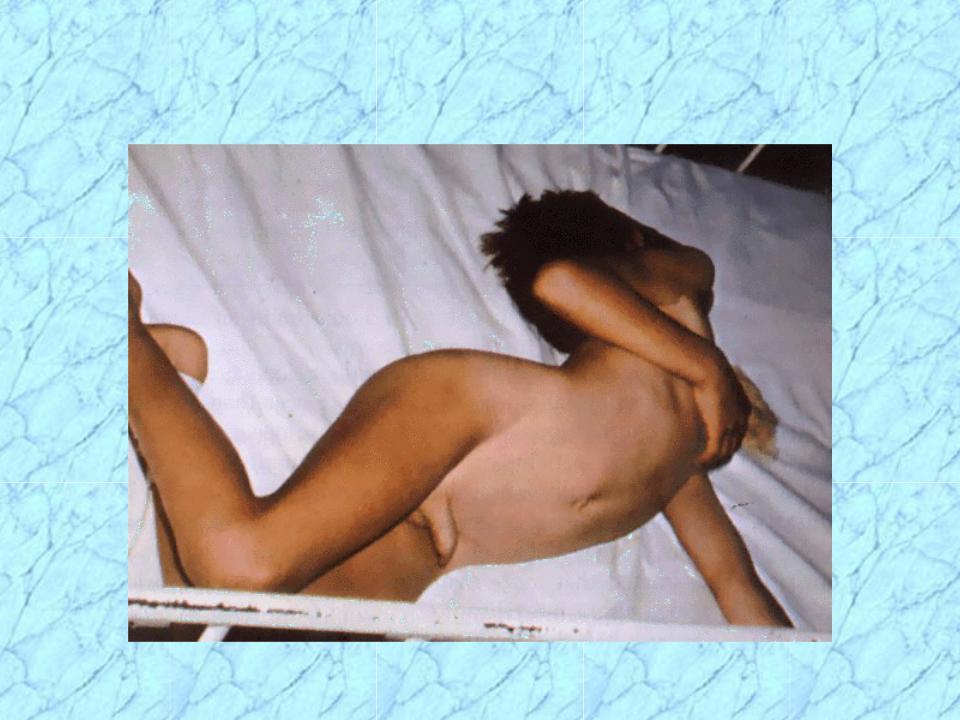
Opisthotonos in Tetanus Patient
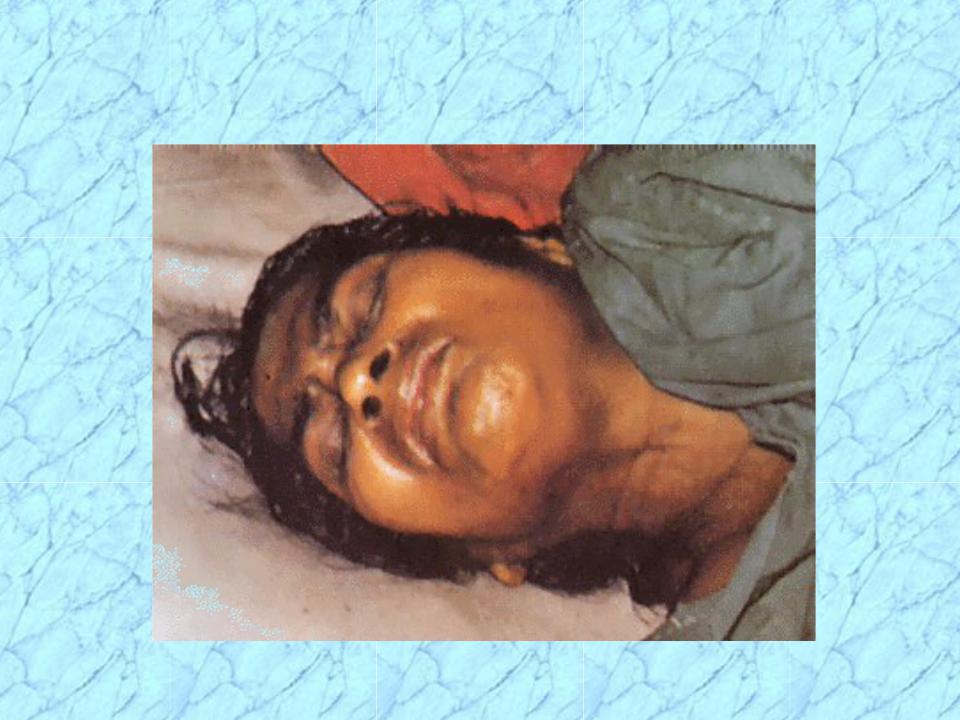
Risus Sardonicus in Tetanus Patient
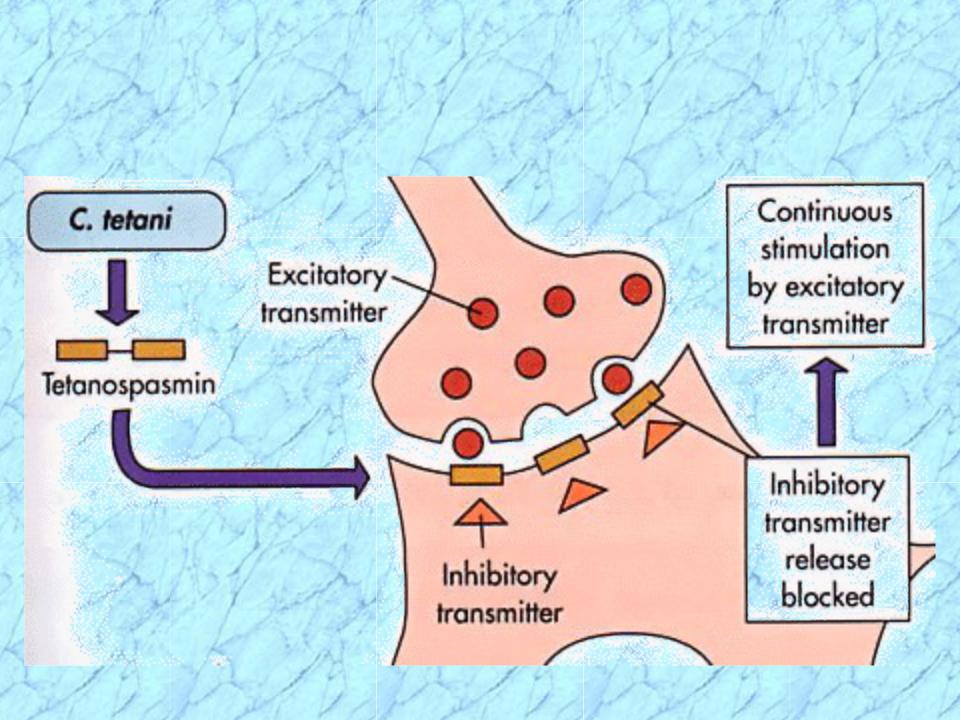
Mechanism of Action
of Tetanus Toxin

Clostridium botulinum
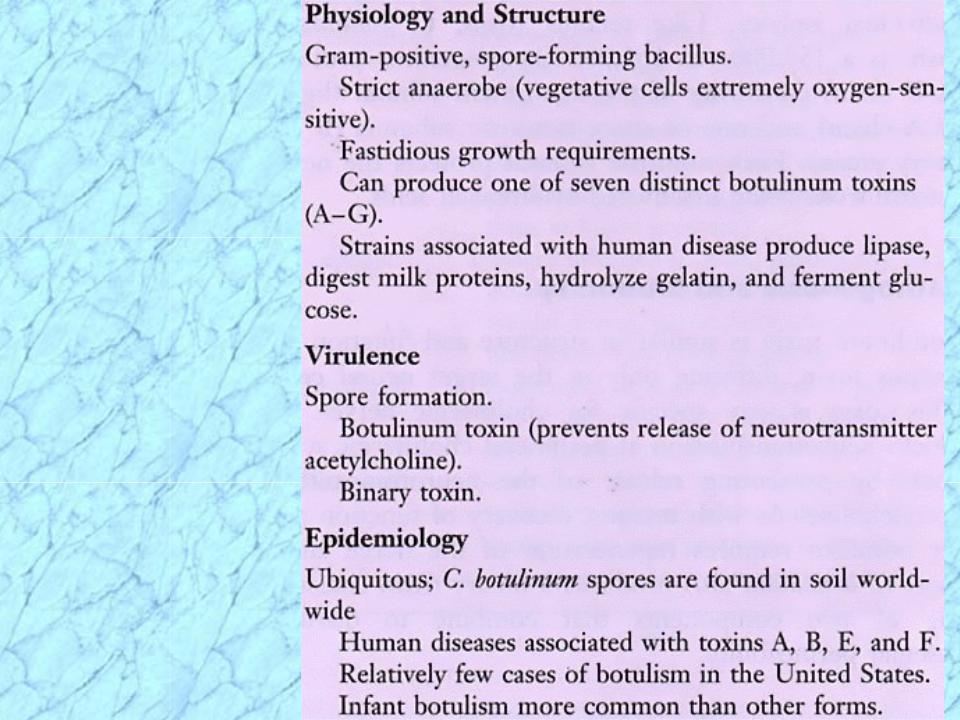
Summary of C. botulinum Infections
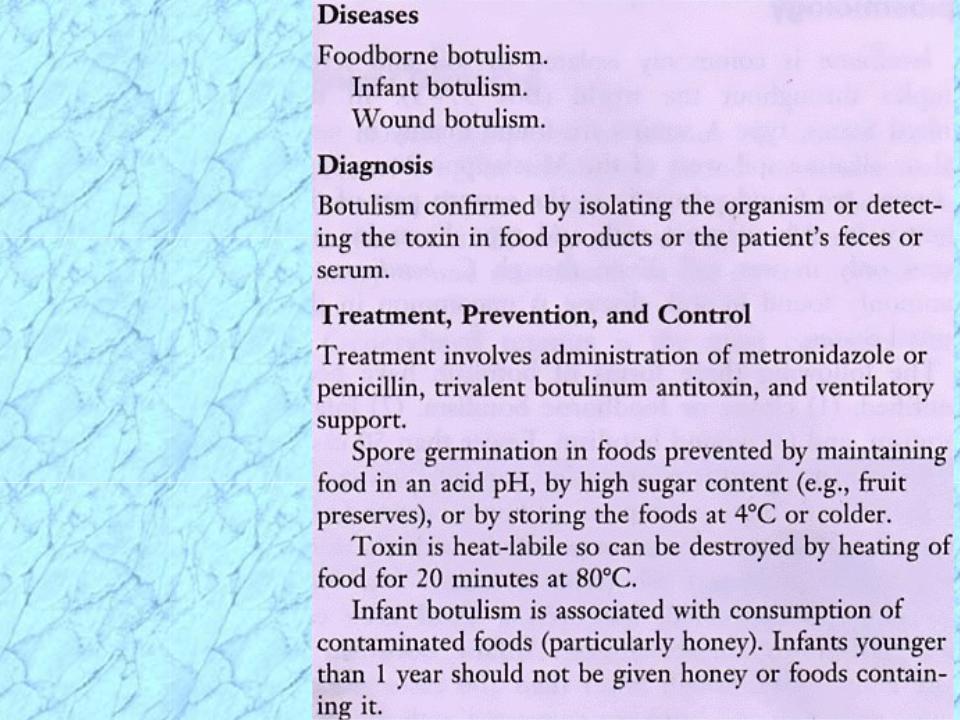
Summary of C. botulinum Infections
(cont.)

C. botulinum — agent of botulism, a rare, but severe (lethal) neuroparalytic disease
Morphology and Physiology
•heterogeneous group of fastidious, strictly anaerobic bacilli
•motile by peritrichous flagella
•heat-resistant spores (ovoid, subterminal)
•proteolytic and non-proteolytic
Antigenic Structure
•species divided into four groups (I-IV) based on type of toxin produced and proteolytic activity
•seven antigenically distinct botulinum toxins (types A to G)
•somatic antigens - heat stable and heat labile; spore antigens - more specific
Pathogenicity Determinants
•lethal foodbome intoxication with toxin types A,B,E,or F; shorter incubation period, poor prognosis
•phage-mediated, systemic-acting A-B neurotoxin (botulinum toxin = botulin) released at cell lysis
Mode of Action - one of most extremely potent neurotoxins known
(1 ng of purified toxin contains about 200,000 minimal lethal doses (MLDs) for a 20g mouse)
•A-B toxin ingested, binds specific receptors on peripheral cholinergic nerve endings (neuromuscular junctions) where it blocks release of presynaptic acetylcholine (excitatory neurotransmitter) blocking muscle stimulation & resulting in flaccid paralysis
•Early: nausea, vomiting, weakness, lassitude (lack of energy), dizziness, constipation
•Later: double vision, difficulty in swallowing and speaking
•Final: death due to respiratory paralysis
Lab Identification
•microscopic detection or Cx (culture) are often unsuccessful (few organisms and slow growing)
•toxin detected and typed in lab via toxicity and antitoxin neutralization tests in mice or by ELISA
Diagnosis/Treatment/Prevention
•crucial to rapidly diagnose (symptoms often confusing); note the type of botulinum toxin involved
•Tx (treatment) should be administered as quickly as possible on basis of clinical Dx (diagnosis)
ventilatory support & trivalent (A, B, E) antitoxin (polyvalent) binds free toxin in bloodstream
administer gastric lavage & metronidazole or penicillin eliminates organisms from Gl tract
care in home canning and in heating of home-canned food; toxoid is available
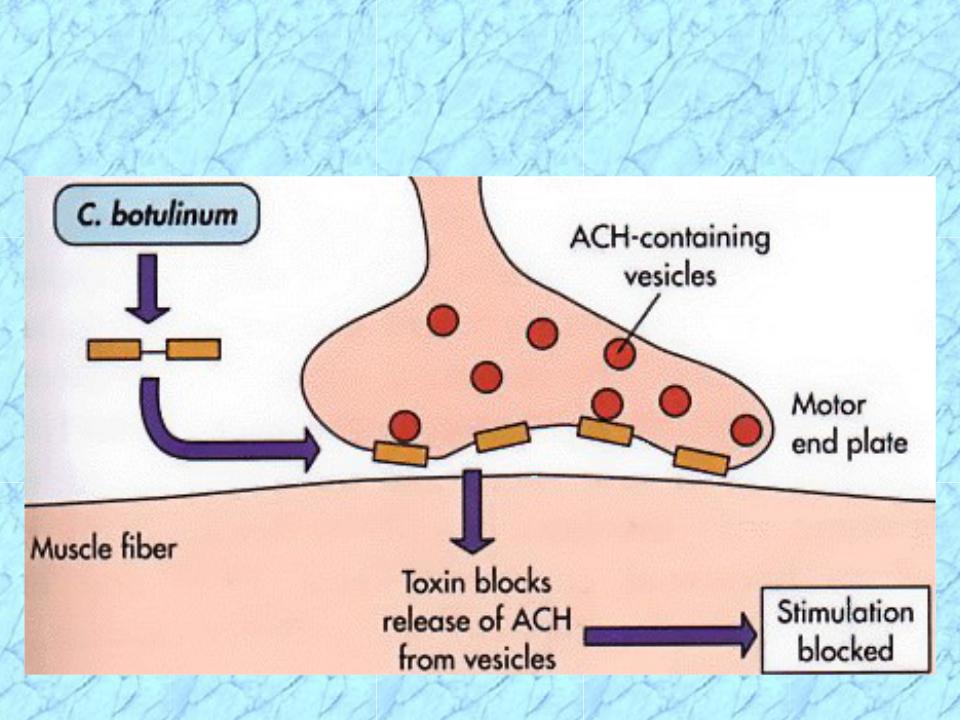
Mechanism of Action
of Botulinum Toxin

Rates of
Isolation of C. botulinum and Botulinum Toxin

